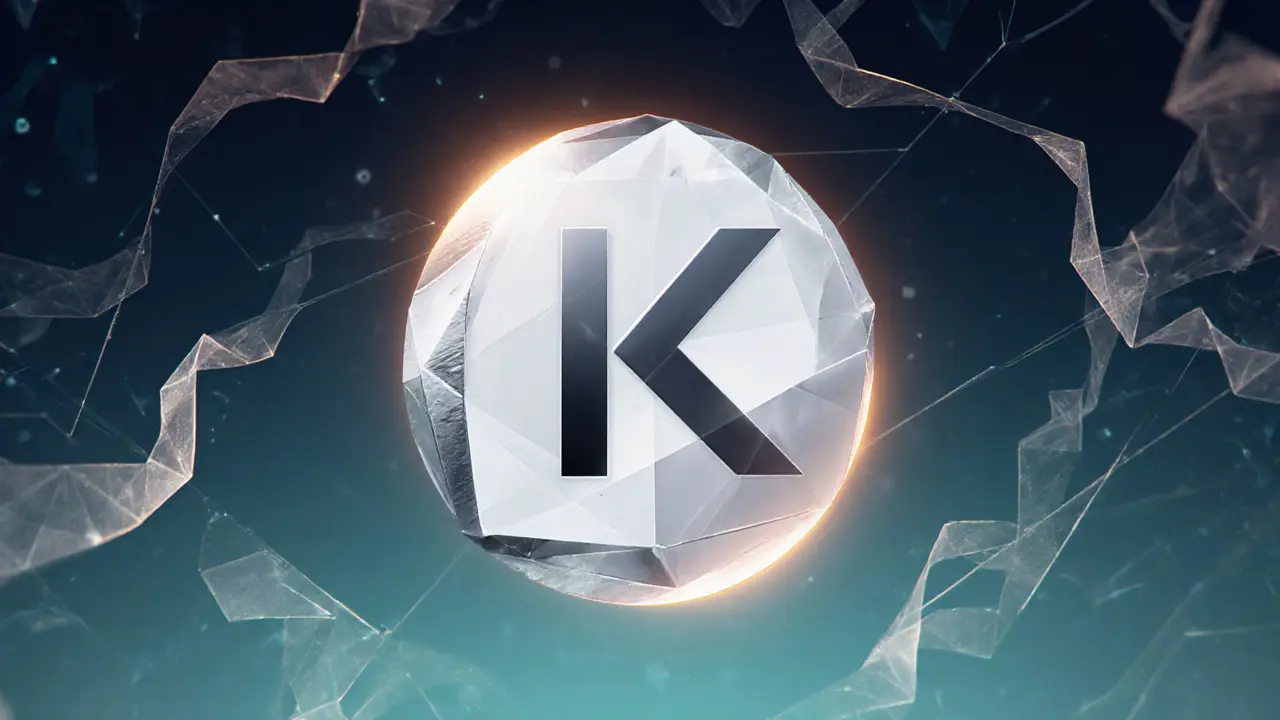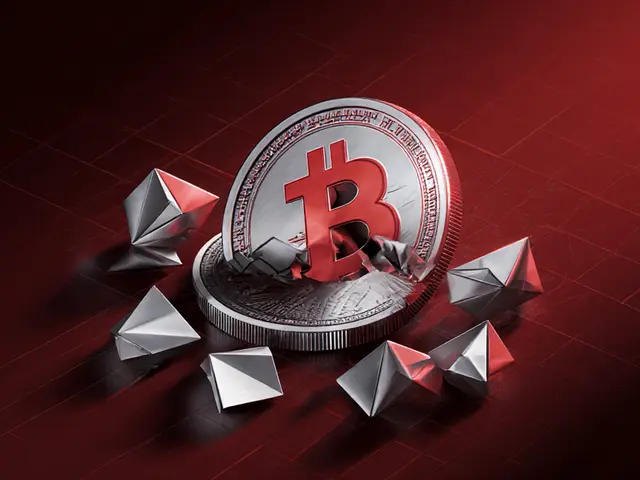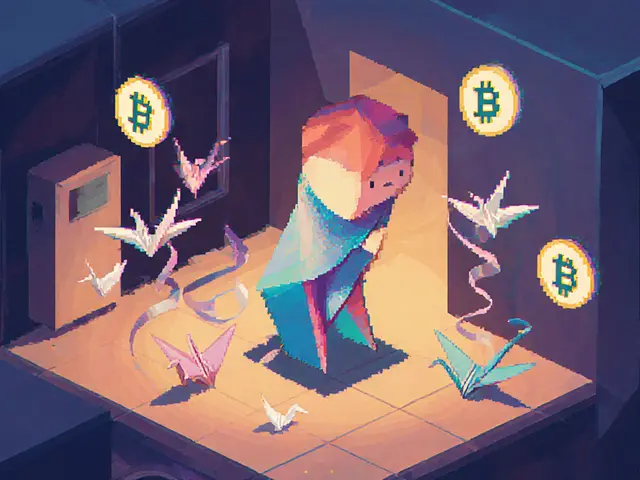KickToken (KICK) Market Tracker
Current Market Data
Ecosystem Overview
KickToken (KICK) powers a suite of financial tools including:
- KickEX Exchange
- KickWallet Wallet
- KickPay Payment
- KickRef Referral
- KickDesk Crowdfunding
- KickAcademy Education
Trading Information
KICK/BSC-USD on PancakeSwap (v2)
- MetaMask
- Trust Wallet
- Walletverse
- Ledger / Trezor
- Setup wallet
- Buy ETH/BNB
- Bridge to BSC
- Swap on PancakeSwap
Risk Assessment
- Low Liquidity High
- Centralized Risk Medium
- Regulatory Uncertainty High
- Market Volatility Very High
Price Forecast Simulation
Estimate potential future prices based on historical performance:
Ever wondered why a tiny token priced at a few thousandths of a dollar keeps popping up in crypto forums? That’s KickToken - the utility token that powers a whole suite of financial tools for crowdfunding, trading, and payments. In the next few minutes you’ll learn what KickToken actually does, how it fits into the Ethereum world, and what its market numbers look like today.
TL;DR - Quick Takeaways
- KickToken (KICK) is an ERC‑20 token built on Ethereum and used within the Kick ecosystem.
- It powers crowdfunding, exchange, wallet, and payment services like KickEX, KickWallet, and KickPay.
- As of 3Oct2025 the token trades around $0.002USD with a 24‑hour volume of $22,398.
- Key platforms to trade or store KICK are PancakeSwap (v2) and wallets that support ERC‑20, e.g., Walletverse.
- Long‑term price forecasts vary wildly; treat them as speculative.
What is KickToken (KICK)?
KickToken is a utility token that functions as the native currency of the Kick ecosystem, a FinTech platform that combines crowdfunding, exchange, and payment services under one roof. Launched alongside the KICKICO crowdfunding platform, KICK lets project creators pay for campaign launches, buy promotional attributes, and settle internal transactions without leaving the ecosystem.
Technical Foundations - ERC‑20 on Ethereum
Ethereum is a public blockchain that enables programmable money through smart contracts, and its ERC‑20 token standard defines a common set of functions for fungible tokens. KickToken follows this standard, meaning it inherits full compatibility with any wallet, DEX, or DeFi app that supports ERC‑20 assets.
The token’s contract adheres to the typical ERC‑20 interface: totalSupply(), balanceOf(address), transfer(address,uint256), and the allowance trio (approve, transferFrom, allowance). Because it lives on Ethereum, KICK benefits from the network’s security model and can be bridged to other chains for lower‑fee trading.
Kick Ecosystem - More Than Just a Coin
The Kick ecosystem is a collection of products that share KICK as a settlement layer:
- KickEX - a centralized exchange where users can trade KICK against fiat and other crypto pairs.
- KickWallet - a multicurrency wallet that stores KICK alongside ETH, BNB, and stablecoins.
- KickPay - a payment gateway for merchants to accept KICK and other tokens.
- KickRef - a referral program that rewards users with KICK for bringing new traders.
- KickDesk - a white‑label token‑sale solution for projects launching on the platform.
- KickAcademy - an education hub that publishes market research and tutorials.
This “one‑stop‑shop” approach aims to keep KICK circulating across multiple use‑cases, rather than leaving it idle in a speculative vault.
Current Market Snapshot (Oct2025)
| Metric | Value |
|---|---|
| Price (USD) | $0.0020 |
| 24‑hr Volume | $22,398 |
| Volume Change (24h) | -12.60% |
| Primary DEX | PancakeSwap (v2) - KICK/BSC‑USD pair |
| Annual Gain | +74.5% |
| Average Daily Price Change (7d) | +2.7% |
Price data is aggregated across two exchanges and two markets using a volume‑weighted average. The token’s modest daily volume reflects its niche positioning, but the 74% year‑over‑year rise shows that the community still sees upside potential.

Where to Trade and Store KickToken
The most active liquidity pool lives on PancakeSwap (v2), where the KICK/BSC‑USD pair generated $3.65 in volume over the last 24hours. Because PancakeSwap runs on Binance Smart Chain, the token is usually bridged via a wrapped ERC‑20 version.
For custodial trading, KickEX offers KICK/USD and KICK/BTC pairs with instant KYC verification. If you prefer a non‑custodial approach, any ERC‑20‑compatible wallet-MetaMask, Trust Wallet, or the dedicated Walletverse - a mobile app that markets itself as the “ultimate KickToken wallet” - will hold your tokens safely. Walletverse includes biometric lock, automatic backups, and the ability to swap KICK for other cryptos directly inside the app.
How to Acquire KickToken
- Set up an ERC‑20‑compatible wallet (MetaMask, Trust Wallet, or Walletverse).
- Buy ETH or BNB on a major exchange (e.g., Coinbase, Binance).
- Send the ETH/BNB to a bridge that supports ERC‑20 to BSC conversion (e.g., Binance Bridge).
- Swap the bridged asset for KICK on PancakeSwap - select the KICK/BSC‑USD pair, enter the amount, and confirm.
- Withdraw the KICK tokens back to your ERC‑20 wallet if you prefer to keep them on Ethereum.
Make sure you have a small amount of ETH/BNB for gas fees; these can be as low as $0.01 on BSC but higher on Ethereum during peak congestion.
Future Outlook and Price Forecasts
Analyst platforms offer wildly different predictions. Changelly projects a 2040 maximum of $8.48 per KICK, with an average around $7.59. In contrast, CoinLore publishes a year‑by‑year outlook that sees KICK bouncing between $0.04 and $0.98 before possibly hitting $1.80 in 2033. These numbers illustrate the speculative nature of long‑term crypto forecasting-real price will depend on adoption of the Kick ecosystem’s tools, overall market sentiment, and regulatory developments.
Key upcoming milestones include stand‑alone crowdfunding software and business‑account capabilities for advertising. If those features launch on schedule and attract project creators, KICK could see renewed demand across its suite of services.
Risks and Considerations
- Low Liquidity: With a daily volume under $25k, large orders can impact price noticeably.
- Centralized Components: KickEX and other services are owned by the same team, creating a single‑point risk if the company faces legal or operational issues.
- Regulatory Uncertainty: Utility tokens that facilitate fundraising may attract scrutiny from securities regulators in multiple jurisdictions.
- Market Volatility: As a niche token, KICK’s price can swing dramatically on news, partnership announcements, or broader crypto market moves.
Investors should only allocate capital they can afford to lose and consider diversifying across more liquid assets.
Getting Started - A Quick Checklist
- Create a secure ERC‑20 wallet (preferably with biometric lock).
- Fund it with a small amount of ETH or BNB for gas.
- Swap for KICK on PancakeSwap or buy directly on KickEX.
- Explore Kick ecosystem services - try KickPay for a small merchant transaction.
- Keep an eye on roadmap updates via KickAcademy or official social channels.
Following these steps puts you in the loop of a community that aims to turn crypto into a real‑world financing tool.
Frequently Asked Questions
What is the primary purpose of KickToken?
KickToken serves as the internal currency for the Kick ecosystem, enabling project creators to pay for crowdfunding services, users to trade on KickEX, and merchants to accept payments via KickPay.
Is KickToken an ERC‑20 token?
Yes. KICK follows the ERC‑20 standard on the Ethereum blockchain, which means it works with any wallet or DEX that supports ERC‑20 assets.
Where can I buy or trade KICK?
The token is most liquid on PancakeSwap (v2) via the KICK/BSC‑USD pair. It is also listed on KickEX, a centralized exchange run by the same team.
Can I store KICK in a hardware wallet?
Yes. Since KICK is an ERC‑20 token, it can be stored in any hardware wallet that supports Ethereum, such as Ledger or Trezor.
What are the biggest risks when investing in KICK?
Low liquidity, reliance on a single ecosystem, regulatory uncertainty, and the overall volatility of the crypto market are the main risk factors.





Henry Mitchell IV
Just a heads‑up, the KICK token’s liquidity is kinda thin, so swinging a big order can really shake the price 😅. Keep an eye on the PancakeSwap pool before you dump a chunk.
Kamva Ndamase
Yo, if you’re looking for a token that actually does something beyond meme hype, KickToken’s suite of tools is pretty wild! 🚀 From crowdfunding to payments, they’ve got a whole ecosystem trying to make crypto practical. Still, the regulatory fog can hit you like a curveball, so tread carefully.
bhavin thakkar
Let’s cut to the chase: KICK is an ERC‑20 utility token that fuels a multi‑product platform, which means its value is tied to actual usage rather than pure speculation. The fact that it’s bridged to BSC for cheaper swaps is a clever way to lower friction. However, the daily volume hovering around $22k is a red flag for liquidity hunters. Remember, liquidity depth directly influences slippage on large trades, which can erode profits fast. Bottom line: treat it as a niche utility with speculative risk.
Thiago Rafael
From a technical standpoint, KickToken adheres strictly to the ERC‑20 specification, thereby ensuring compatibility with all standard wallets and DEXs. Its smart‑contract code does not incorporate any minting capabilities beyond the initial supply, which mitigates inflation concerns. Nonetheless, the centralization of KickEX and the reliance on a single ecosystem introduce a systemic risk that investors must acknowledge. Moreover, regulatory scrutiny on utility tokens that facilitate fundraising could affect its long‑term viability.
Janelle Hansford
Hey folks, I think it’s worth noting that the Kick ecosystem tries to create real‑world utility, which is a breath of fresh air compared to pure speculation. If you actually use KickPay or KickEX, you’ll see the token move in a more functional way. Keep diversification in mind, but give KICK a look if you like utility‑driven projects.
dennis shiner
Sure, because the crypto market needed another token with "high" volatility.
Krystine Kruchten
While the token’s price action can be jittery, the underlying services like KickAcademy provide educational value that can attract new users. It’s a subtle but important factor that can slowly boost demand for KICK.
Mangal Chauhan
😁 If you’re curious about the ecosystem, start with a tiny purchase on PancakeSwap and test the wallet integration. It’s a low‑risk way to see if the utility matches your needs.
Iva Djukić
KickToken represents an intriguing case study in the evolution of utility tokens within the broader decentralized finance landscape. Its design philosophy centers on providing a native medium of exchange for a suite of services, thereby attempting to bind token demand to functional usage rather than pure speculative appetite. The integration of KickEX, KickPay, and KickWallet creates a closed-loop ecosystem where transaction fees, referral rewards, and service payments are denominated in KICK, which in theory should generate a baseline of intrinsic demand. Nevertheless, the token’s market dynamics are heavily influenced by its limited liquidity, as evidenced by a 24‑hour volume that scarcely breaches $25 k, meaning that even moderate trade sizes can precipitate noticeable slippage. From a technical perspective, the ERC‑20 implementation ensures broad compatibility but also subjects the token to Ethereum’s high gas fees during periods of network congestion, a drawback that the project mitigates through BSC bridging. Regulatory uncertainty looms large, given that many jurisdictions are still delineating the legal status of utility tokens that facilitate fundraising activities; this ambiguity could translate into compliance costs or potential restrictions. The token’s price trajectory, as modeled by various forecasting tools, displays a wide variance, ranging from modest growth to overly optimistic projections, underscoring the speculative nature embedded in any long‑term price estimate. Operational risk is another salient factor, with KickEX and other centralized components concentrating control within a single organizational entity, thereby creating a single point of failure should the team encounter legal or financial difficulties. Moreover, the token’s circulatory supply is modest, and a sizeable portion is presumably retained by the project’s treasury, which could affect market supply dynamics if large releases occur. Community sentiment appears cautiously optimistic, with users highlighting the practical applications of the ecosystem, yet many remain wary of the token’s volatility and the broader market’s propensity for rapid corrections. In terms of adoption, the success of upcoming product releases, such as the stand‑alone crowdfunding platform, will be pivotal in converting utility into tangible demand for KICK. Investors should therefore calibrate their exposure, balancing the allure of potential upside against the concrete risks of low liquidity, regulatory scrutiny, and centralized operational dependencies. Diversification across more liquid assets remains a prudent strategy, but for those seeking exposure to utility‑driven tokens, KICK offers a distinctive, albeit high‑risk, proposition. Ultimately, the token’s future will hinge on its ability to translate ecosystem usage into sustainable token velocity, a challenge that many utility projects grapple with in the nascent DeFi era.
Darius Needham
The long‑term outlook hinges on whether Kick can deliver on its roadmap milestones; without real user adoption the token’s utility narrative may remain theoretical.
WILMAR MURIEL
I’ve been watching the KICK community for a while, and what stands out is the blend of fintech ambition with crypto’s experimental spirit. The platform’s effort to create an all‑in‑one solution is ambitious, yet the execution risk cannot be ignored. From a risk‑adjusted perspective, the token’s volatility combined with thin order books makes it more suitable for speculative traders than for stable, long‑term holders. That said, if the upcoming crowdfunding tools gain traction, we could see a modest uplift in transaction volume, which might soft‑enlarge the token’s market cap. As always, I advise allocating only a small portion of your portfolio to such high‑risk tokens.
carol williams
While the ecosystem’s vision is commendable, the centralization of services like KickEX does raise concerns about operational resilience.
jit salcedo
Honestly, I think the whole thing is a perfect storm of hype, regulatory gray zones, and over‑engineered tech that probably will never see mainstream use. The token feels more like a speculative wrapper than a genuine utility.
Lisa Strauss
Even if the odds are slim, the potential upside for early adopters can still be exciting, so I keep an eye on any positive updates.
Latoya Jackman
The token’s price volatility is notably high, reflecting its limited liquidity and speculative nature.
Megan King
Just a reminder: always do your own research and never invest more than you can afford to lose.
karsten wall
From a technical lens, the ERC‑20 compliance ensures interoperability, but the need to bridge to BSC for cheaper swaps adds an extra layer of complexity that could deter some users.
C Brown
Sure, because adding another bridge is exactly what the crypto world needed to fix all its problems.
Adeoye Emmanuel
Philosophically, the pursuit of utility in tokens like KICK reflects the broader quest for integrating decentralized finance into everyday economic activity, yet the path is riddled with systemic challenges.
Rahul Dixit
And if you think regulators won’t intervene, you’re underestimating the sheer amount of hidden agendas in the crypto sphere.